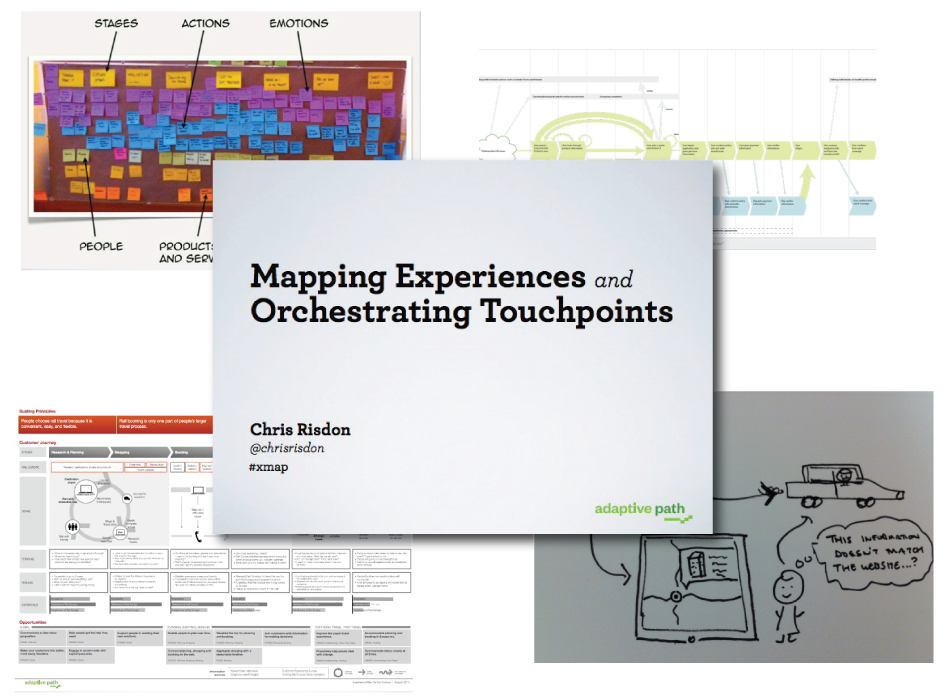Mapping the Experience with Chris Risdon: A Brief Review
Reading time: Less than a minute

Today I had the opportunity to attend (listen to?) one of Adaptive Path’s virtual seminars covering experience maps led by Chris Risdon.
As anyone could argue, there is a lot of thought/work/research that goes into design of a product, whether it’s a tangible thing or a virtual experience. After attending the UX Boot Camp I left with an overload of information, ideas, scribbled notes, and a big question of “ok…how will I apply all of this?”. It was a great experience and I did learn a lot, but it was meant to take the whole process, start to finish, of designing a new product and give you a brief overview of all the steps to help get you where you want to be.
The advantage of this seminar (and most likely Cooper’s more focused seminars I’m guessing) was that it was able to take just one piece of that process and, thus, have the ability to go into further detail. Chris did a great job of bringing in relevant examples (like using Indiana Jones to help explain telling the story instead of marking the distance from point a to point b – LOVE Indy!). Or bringing in actual case studies to walk us through of how they build an experience map (once they’ve gone through the task of identifying what it is they are working with and done their fair share of research to understand the stakeholders), starting with:
- establishing the lens you need to look through as you go through the journey
- mapping out the journey itself with the actions, thoughts, and feelings of the users placing in appropriate touchpoints, actors, places, etc at each stage of the journey
- building your takeaways for what all this mapping means and how you can build your findings into a strategy (“Deliverables with no explicit intent defined rot on the vine” as Chris rightfully pointed out)
Overall, it was extremely helpful and as I walked to lunch after the seminar I was inspired with ideas of how I can apply some of these techniques and tools in our work. Unfortunately (at no fault of Adapative Path) virtual seminars tend to be harder for me to concentrate at (I blame my co-workers), but luckily the pdf will help bridge any gaps where I might have been distracted.
ps. I just caught this on Adaptive Path’s blog; a recap on the experience mapping workshop led at UX Week 2012. Take a look if you want more information on the topic!